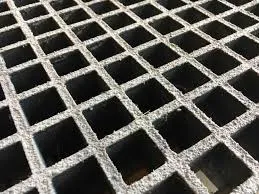
-
 Afrikaans
Afrikaans -
 Albanian
Albanian -
 Amharic
Amharic -
 Arabic
Arabic -
 Armenian
Armenian -
 Azerbaijani
Azerbaijani -
 Basque
Basque -
 Belarusian
Belarusian -
 Bengali
Bengali -
 Bosnian
Bosnian -
 Bulgarian
Bulgarian -
 Catalan
Catalan -
 Cebuano
Cebuano -
 China
China -
 China (Taiwan)
China (Taiwan) -
 Corsican
Corsican -
 Croatian
Croatian -
 Czech
Czech -
 Danish
Danish -
 Dutch
Dutch -
 English
English -
 Esperanto
Esperanto -
 Estonian
Estonian -
 Finnish
Finnish -
 French
French -
 Frisian
Frisian -
 Galician
Galician -
 Georgian
Georgian -
 German
German -
 Greek
Greek -
 Gujarati
Gujarati -
 Haitian Creole
Haitian Creole -
 hausa
hausa -
 hawaiian
hawaiian -
 Hebrew
Hebrew -
 Hindi
Hindi -
 Miao
Miao -
 Hungarian
Hungarian -
 Icelandic
Icelandic -
 igbo
igbo -
 Indonesian
Indonesian -
 irish
irish -
 Italian
Italian -
 Japanese
Japanese -
 Javanese
Javanese -
 Kannada
Kannada -
 kazakh
kazakh -
 Khmer
Khmer -
 Rwandese
Rwandese -
 Korean
Korean -
 Kurdish
Kurdish -
 Kyrgyz
Kyrgyz -
 Lao
Lao -
 Latin
Latin -
 Latvian
Latvian -
 Lithuanian
Lithuanian -
 Luxembourgish
Luxembourgish -
 Macedonian
Macedonian -
 Malgashi
Malgashi -
 Malay
Malay -
 Malayalam
Malayalam -
 Maltese
Maltese -
 Maori
Maori -
 Marathi
Marathi -
 Mongolian
Mongolian -
 Myanmar
Myanmar -
 Nepali
Nepali -
 Norwegian
Norwegian -
 Norwegian
Norwegian -
 Occitan
Occitan -
 Pashto
Pashto -
 Persian
Persian -
 Polish
Polish -
 Portuguese
Portuguese -
 Punjabi
Punjabi -
 Romanian
Romanian -
 Russian
Russian -
 Samoan
Samoan -
 Scottish Gaelic
Scottish Gaelic -
 Serbian
Serbian -
 Sesotho
Sesotho -
 Shona
Shona -
 Sindhi
Sindhi -
 Sinhala
Sinhala -
 Slovak
Slovak -
 Slovenian
Slovenian -
 Somali
Somali -
 Spanish
Spanish -
 Sundanese
Sundanese -
 Swahili
Swahili -
 Swedish
Swedish -
 Tagalog
Tagalog -
 Tajik
Tajik -
 Tamil
Tamil -
 Tatar
Tatar -
 Telugu
Telugu -
 Thai
Thai -
 Turkish
Turkish -
 Turkmen
Turkmen -
 Ukrainian
Ukrainian -
 Urdu
Urdu -
 Uighur
Uighur -
 Uzbek
Uzbek -
 Vietnamese
Vietnamese -
 Welsh
Welsh -
 Bantu
Bantu -
 Yiddish
Yiddish -
 Yoruba
Yoruba -
 Zulu
Zulu
fiberglass stack liner alternative
Exploring Alternatives to Fiberglass Stack Liners
In the realm of industrial applications, stack liners play a crucial role in safeguarding equipment and enhancing operational efficiency. Among the various materials used, fiberglass stack liners have been a popular choice due to their notable strength, lightweight characteristics, and corrosion resistance. However, as industries evolve and environmental concerns mount, the need for alternative materials that offer similar benefits while also emphasizing sustainability becomes increasingly evident. This article delves into various alternatives to fiberglass stack liners, exploring their properties, advantages, and potential applications.
1. Ceramic Coatings
Ceramic coatings have emerged as a viable alternative to traditional fiberglass stack liners. These coatings provide excellent resistance to high temperatures and corrosive environments, making them suitable for use in various industries, including power generation and chemical manufacturing. The primary advantage of ceramic coatings is their ability to withstand extreme conditions without degrading, thus extending the lifespan of the underlying infrastructure. Additionally, these coatings are often applied in thinner layers compared to fiberglass liners, resulting in reduced weight and easier installation.
2. Polymer-Based Liners
Another noteworthy alternative is polymer-based liners, such as polyethylene, polypropylene, or other advanced polymers. These materials are known for their excellent chemical resistance, flexibility, and durability. Polymer-based liners can be engineered to accommodate specific environmental conditions, making them suitable for various applications, from waste management to flue gas desulfurization systems. Moreover, advancements in polymer technology have led to the development of liners that can withstand high temperatures and aggressive chemicals, challenging the traditional dominance of fiberglass.
For applications requiring superior strength and durability, stainless steel liners present a compelling option. Stainless steel is inherently resistant to corrosion and offers excellent thermal conductivity, making it suitable for high-temperature environments. While stainless steel liners may come with a higher initial cost compared to fiberglass, their long-term benefits, including lower maintenance requirements and extended service life, often justify the investment.
fiberglass stack liner alternative

4. Composite Materials
The emergence of advanced composite materials is another significant development in the quest for effective stack liners. Composites, often made from a combination of resin and reinforcing fibers, can provide the durability and strength of fiberglass while incorporating other materials to enhance properties such as thermal resistance and weight reduction. These materials are highly versatile and can be tailored to meet specific performance criteria, making them suitable for a wide range of industrial applications.
5. Innovative Natural Materials
In recent years, there has been a shift towards exploring natural materials as alternatives for stack liners. Innovations in bio-based products, such as natural fibers and bio-resins, offer the potential for sustainable and environmentally friendly options. These materials can provide adequate resistance to heat and chemicals while reducing the carbon footprint associated with traditional synthetic materials. As industries strive for greener solutions, leveraging natural materials may become increasingly viable.
Conclusion
While fiberglass stack liners have served many industrial applications effectively, emerging alternatives are reshaping the landscape of material selection. Ceramic coatings, polymer-based liners, stainless steel options, advanced composites, and innovative natural materials each present unique properties that can address specific operational challenges. As industries prioritize sustainability and seek to minimize environmental impact, these alternatives not only provide comparable performance but also align with broader ecological goals.
The ongoing research and development in material science, driven by changing industry demands and regulatory pressures, suggest that the future of stack liners will be characterized by diversity and innovation. Embracing these alternatives can lead to improved efficiency, reduced maintenance costs, and a commitment to sustainable practices in industrial operations.









